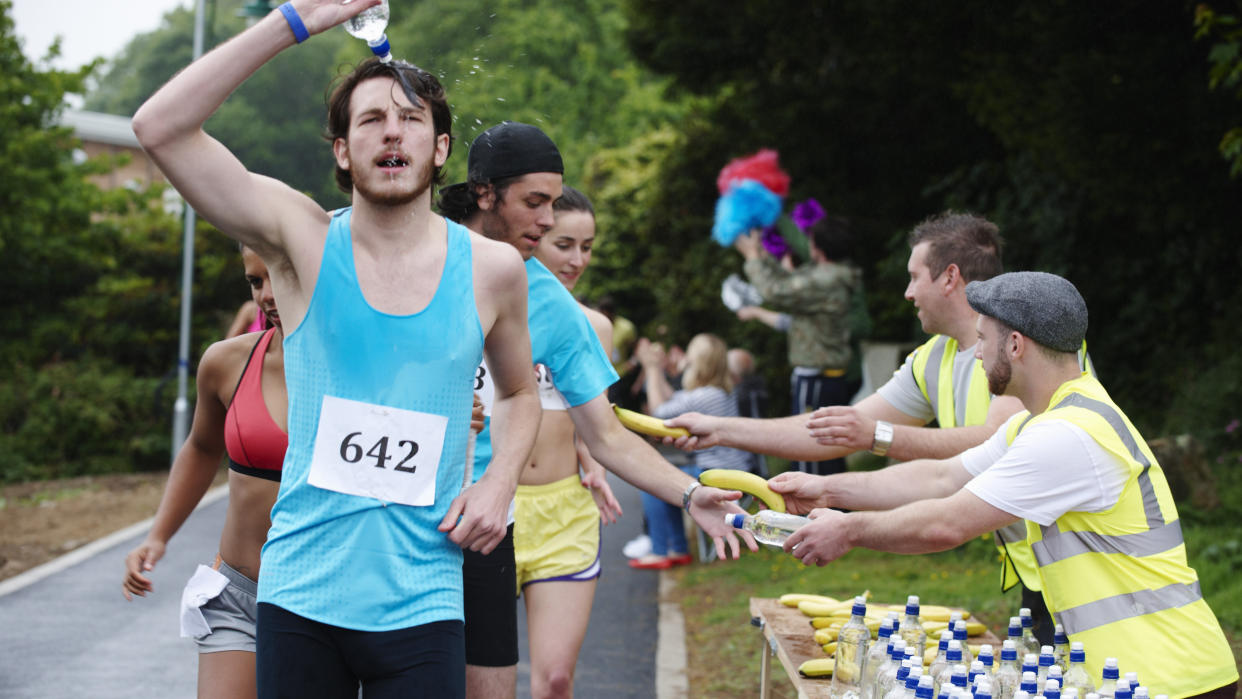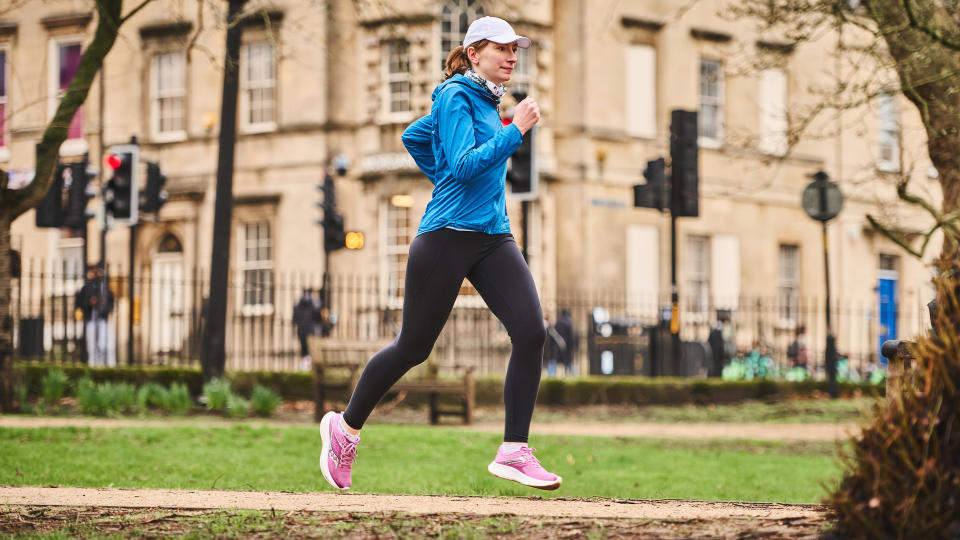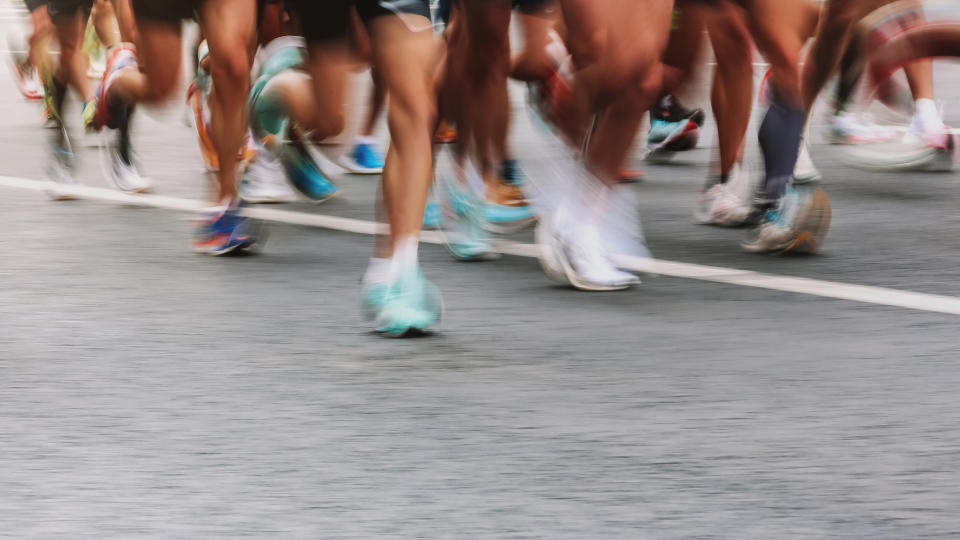How to run a 3:30 marathon: beat your PB in 2024

The four-hour marathon has been conquered. The pain has receded, leaving only the joys of the day imprinted in your memory. Your feet are itchy for your next challenge, despite the fact that at around the 19-mile mark you were promising yourself never to do this again. Well, you are. This time, you want sub 3:30!
However, training towards a sub 3:30 marathon can be somewhat intimidating. You're going to need time, dedication and grit – but you can bring those. What you need is some advice to channel these qualities into an effective plan.
Don't fear, our running enthusiast has been speaking to running performance experts about what it takes to smash the 3:30 barrier.
How to run a 3:30 marathon
Be dedicated: Dedicate yourself to consistent training
Give yourself time: Ideally, give yourself 24 weeks to build up your training
Vary your training: Mix it up with speed sessions, recovery runs and long runs
Taper before the race: Your longest training run should be no sooner than three weeks before the big day
Proper pacing: Aim to keep the same pace throughout or speed up in the second half
Other training: Strength and conditioning sessions help, as does weekly yoga
Recovery: Listen to your body and allow it at least one rest day every week
Choose the right race: Choose a marathon that you're likely to enjoy
Meet the expert
Today's best deals
The 3:30 marathon
A 3:30 marathon – or a sub 3:30 – is seen by many runners as a bucket list time. As Arj Thiruchelvam, head coach at Performance Physique, says: “For most amateur runners having achieved a four-hour marathon, the next target is often a 3:30 marathon.”
However, progression towards running a 3:30 time for a marathon depends on a number of factors, including your running history, age, as well as commitment to a training plan. If you can repeatedly and doggedly lace up your road running shoes and really commit, you're in with a chance.
The need for dedication
Build up your speed and distance over 12-18 months
Focus first on a 5k, then 10k, then half marathon, before attempting a marathon
Dedication to your training is the key

Christian Allen, an England Athletics qualified run leader, says: "If you’re relatively new to running you’re going to need to build yourself up to this distance, and pace over time. I’d recommend allowing yourself 12 to 18 months to do this, first concentrating on a 5k, then 10k and then half marathon goal before tackling the marathon."
In addition, he believes the runners who are most likely to achieve a 3:30 time for a marathon are those who are "the most dedicated and consistent in their training".
He adds: "Those who are already fit, healthy and dedicated to running are most likely to achieve a faster marathon. You’ll probably already have some marathons under your belt and you will be used to running long distances at pace.”
Choosing your plan
A 3:30 marathon requires a pace of 7:58 minutes per mile
A proper marathon training plan is vital
Ideally give yourself 24 weeks on the training plan

The average pace to achieve a 3:30 marathon is 7:58 minutes per mile or 4:57 minutes per kilometer.
A 3:30 marathon training plan, written by a professional, is vital for runner to put in the specific hard work required to achieve their goal.
Allen, who works for Runners Need, makes the point that training is a very individual thing. “It all depends on a person’s running experience beforehand, such as whether they have already run marathons, what their previous times have been for these marathons and also their half marathon times," he says.
“I’d suggest that the minimum build-up for a marathon is around 12 weeks, but better still you should give yourself 24 weeks.”
The training plan
A marathon training plan should include a range of running workouts
A mix of slow runs, speed sessions and one long run each week is ideal
You should aim to run faster than your intended pace on some runs

A training plan for a 3:30 marathon should include a range of different types of running workouts.
Allen says: “You need to incorporate a mix of tempo running, where you can have a comfortable conversation while running at pace, and speed sessions to help make your marathon pace feel more comfortable, plus a long run each week.
“During training, runners also need to learn how to get comfortable with their aimed for marathon pace, which often involves running faster than this for periods, too.”
Allen says the best way to train specifically for a 3:30 marathon time. “With your tempo sessions, you want to gradually build up the distance where you’re running at pace each week until you reach a maximum of around 12 to 15 miles in a session running at your 7:58 per mile pace.
“Speed sessions are also important and there are a number of different training options you can do where you up your speed even further, for example 6 x 1 mile at 7:30 minute a mile pace. These should be short and sharp so you get used to running at speed.
“Then there’s the long run, which will help you to get the miles in your legs. There are lots of different ways you can do your long run. You can run at a solid pace each week until you reach around 24 miles, or you can incorporate a tempo session into your long run, where you’re running at your race pace.”
Allen gives an example of how this would look: run 30 minutes easy pace, an hour at tempo pace, then 30 minutes easy pace.
Taper before the big day
It's vital to taper your training as you approach the race
Your longest training run should be no sooner than three weeks before the race

It’s also important that runners allow enough time to taper ahead of a marathon race to ensure they are physically rested and in optimum condition.
Allen says: “Your longest run should be no sooner than three weeks before the race and then you start to work your way back down, cutting your overall weekly mileage by 20 to 30 per cent each week.”
For example, if your longest week mileage was 50 miles, you should decrease this by 10 to 15 miles the following week.
Pace yourself
Proper pacing is crucial
Many marathon runners start off too fast, which leads to fatigue later on
You should aim to keep the same pace throughout or achieve a faster second half of the marathon

It’s vital that runners learn how to properly pace a marathon, whatever their hoped-for finish time. Rachael Woolston, coach and founder of Girls Run the World , says: “Many marathon runners miss out on their goal by starting off too fast.”
Christian agrees. "The main thing to avoid is going off too fast, or pushing too hard too early, which could easily lead to a feeling of fatigue and heavy legs later on," he says. "This, in turn, is likely to slow your overall pace.
"Runners should either aim to run an even pace throughout a marathon, or try to achieve a negative split, which means running the second half of a race faster than the first half.
“At the heart of all of this is training at the right pace. So in your running sessions, you will learn how to run at the required pace for your hoped-for time of a 3:30 marathon, and also include some slightly faster session. This way you will become familiar with the right pace before the race itself."
Other kinds of training
A mix of strength and conditioning training, yoga and a rest day every week is ideal

Strength and conditioning sessions help build muscles for marathon runners – and allow your body to become stronger, while also aiming to minimise the risk of getting injured.
Allen also suggests a weekly yoga or stretch session as part of a marathon training plan. He adds: “Plus you should aim for a rest day each week. It’s important to allow your body time to recover as this is when your muscles repair and build.”
Choose the right marathon race
Choose a marathon race that appeals to you
You could do it with friends for extra support and that sense of fun
Completing it with a pacer is a good way to improve your odds of success

You should pick a race that appeals to you, perhaps in a new location, with friends, or with lots of interesting things to see en route. Also think about the course, such as how flat the route is. A flatter marathon is more likely to give you a faster time.
If you know that a marathon is renowned for a great atmosphere, with lots of spectators to cheer you on, this could help to motivate you to run a faster race.
”Choosing a marathon the you will enjoy means you will be more likely to run a good pace,” Allen says.
Many marathons have official pacers who set the right pace for different marathon finish times. Sticking with a pacer throughout a marathon, or making sure you keep a careful eye on your pace with your sports watch, will give you the best chance of a consistent speed and ultimately achieving a goal of a 3:30 marathon.
Best trail running shoes: footwear for speed, stability, and comfort
